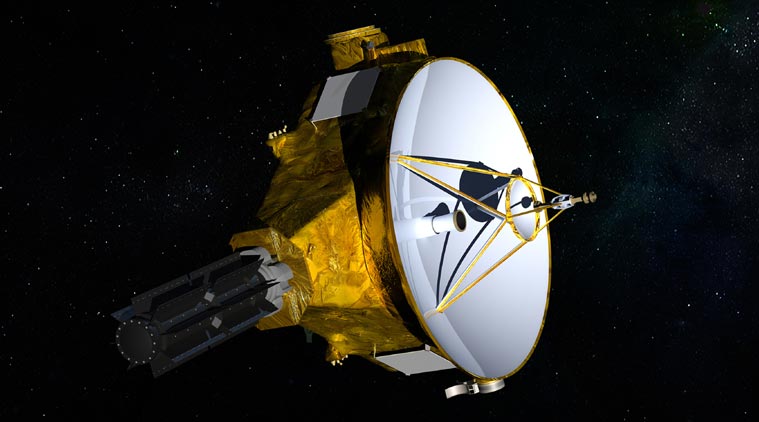By Reuters |Published: January 4, 2019 4:02:36 pm
After historic Ultima Thule flyby, New Horizons probe treks deeper on hunt for moons
NASA's New Horizons spacecraft set off on a new hunt for moons in the solar system's most distant edge, searching for clues on our solar family's creation, scientists said on Thursday.

After studying a space rock some 4 billion miles (6.4 billion km) from Earth, NASA’s New Horizons spacecraft set off on a new hunt for moons in the solar system’s most distant edge, searching for clues on our solar family’s creation, scientists said on Thursday.
The piano-sized probe is traveling deep into the ring of celestial bodies known as the Kuiper Belt looking for small, icy moons that spun off the snowman-shaped Ultima Thule formation, a pair of icy space rocks that fused in orbit billions of years ago. “If we’ve seen bodies one and two, the question is what about bodies three, four and five?” Mark Showalter, a New Horizons investigator, said during a news conference at the Johns Hopkins Applied Physics Laboratory in Maryland.
New Horizons on New Year’s day came within 2,200 miles (3,500 km) of Ultima Thule, which represents a pristine time capsule dating to the birth of the solar system. The fly-by marked the farthest close encounter of an object within our solar system. Since then, the probe has sent images revealing Ultima Thule to be a “contact binary” – two bodies that formed separately and then got stuck together. The formation, resembling a red-hued snowman – caused by irradiated ice – is just over 21 miles (34 km) long.






















No hay comentarios:
Publicar un comentario